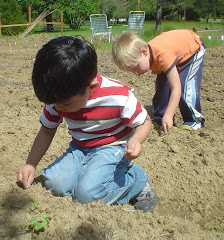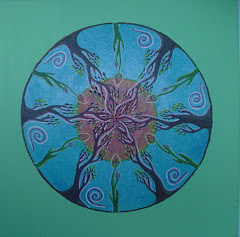 | |
|
Did you know that Mason Bees (Osmia lignaria) are one of the most common hole-nesting bees? They are wonderful pollinators, especially for apples and pears. Researchers claim they can be up to 90% more efficient at pollinating than honeybees due to the fact that Mason Bees will forage in light rain and at cooler temperatures than honeybees and other pollinators. If you are worried or concerned about getting stung then this hard working little Mason Bee may be just what you and your flowers and vegetable gardens are looking for. Mason Bees are not aggressive since they are a solitary bee and are not defending a queen they are considered quite docile.
 |
| Linda's nesting boxes are hung under the eves, on the southeast side of a shed so they get sun and are protected from prevailing winds/rains. Insets show other styles of nesting boxes. |
Nesting boxes for Mason Bees: In the photos you can see that I have quite a few nesting boxes. My nesting boxes are hanging under the eaves of my pump house facing towards the southeast so they can be warmed by the early morning sun and protected from direct rain. Mason bees are easy to care for. You can make new nesting boxes by using a drill press and a 5/16 bit and blocks of UNTREATED wood. You may also purchase nesting straws. I have found the straws at the WildBirdsUnlimited store in Corvallis. For right now I have placed 2 new nesting boxes and a package of straws for the ladies to use as new homes for their eggs. As these begin to fill up I will continue making new boxes. Last year the girls were so prolific that I had to make several new nest blocks 3 different times.
 |
| Chris hangs nesting boxes at Crowson/Monroe garden |
Mason Bee life cycle: This year, my Mason Bees began emerging in early April. The males hatch out first once our temperatures get above 55 degrees for 3 days in a row. The females seem to understand that it is important to lay female eggs at the back of the holes and lay the male egg at the front of each hole. This assures the survival of this species as it only takes one male to mate with several female Mason Bees. Once the weather begins to warm and the males emerge they then wait around for several days for the females to chew through their cocoon and then chew through the mud wall that divides each egg cell until they reach the end of the nesting hole and crawl out to live their short productive life in our wonderful Willamette Valley. The males then fly around chasing the females in a mating dance. Once the males have mated their job is complete and they die. The females immediately begin gathering pollen and laying eggs. They do not excavate holes but look around their environment for a 4-6 inch-long space that is approximately 5/16 of an inch in diameter. They are often seen crawling up under house shingles. No need to worry though. They do not damage your siding but are merely looking for a safe, dry place to lay their eggs. After she has gathered pollen she will return to the nesting tubes/boxes, fly into the holes and turn circles inside which helps the gathered pollen fall off her body as she wiggles her way to the end of the tube.
 |
| Mason Bee larvae with pollen-ball for larval feeding. |
There she will lay her tiny egg and put a pollen ball on top of that. She will leave about a 1 inch space and she then make a 1/4 inch mud plug to wall off that egg, hence the name "Mason" Bee. For the next 8-10 weeks these busy ladies continue gathering pollen and nectar. Sometime towards the end of June their life's work is over and they die. During the summer months the eggs develop into larvae. The larvae feeds on the pollen and nectar and develop into pupae. The Mason Bee pupae develop into bees protected inside a cocoon. They hibernate over the winter and emerge sometime towards the end of March or early April to start this marvelous life cycle over again. Click here for excellent pictures of Mason Bee life cycle.
HappBee gardening. Linda Zielinski
Linda Zielinski is an avid Mason Bee 'farmer' who lives in Philomath, Oregon. She generously provided the "Sharing Gardens" with a starter house of bees which we hope will multiply so we can spread them around the valley and help other gardeners get them established. Check back next February if you're interested in getting a starter house of Mason Bees for next spring. Thank you, Linda, for writing this article about the bees for us to post on our site.





































No comments:
Post a Comment